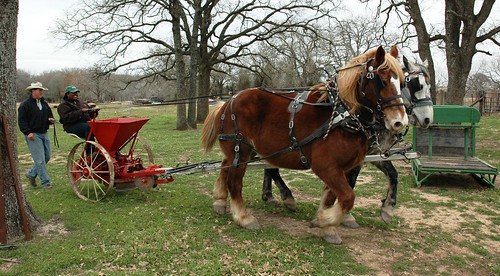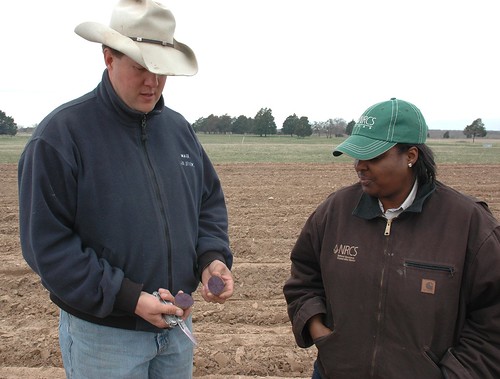
“Out with the old, in with the new” isn’t the rule of thumb at Sand Creek Farm in Cameron, Texas. Ben Godfrey, the organic farmer who owns the farm, has used the Environmental Quality Incentives Program (EQIP), a conservation program administered by USDA’s Natural Resources Conservation Service (NRCS), to help increase the environmental benefits on his farm in Milam County.
Sand Creek Farm produces raw milk, a variety of cheeses, grass-fed beef, yogurt, jams, honey, soy-free pork and chickens, and cage-free eggs. To produce this bounty, Godfrey practices old-fashioned ways of agriculture production, using a two-horse system to plow and cultivate his fields.

Godfrey sells Sand Creek Farm’s products to many regular customers, and he also has a booth at the local farmer’s market to help expand his market share.
Godfrey teamed up with NRCS after a neighbor suggested it as a way for him to increase production on his 170 acres of farmland. Through the EQIP Organic Initiative, Godfrey worked with local NRCS personnel to develop a conservation plan using conservation practices benefitting his organic farm, including crop rotation, cover crops and pest management.
Godfrey says that technical and financial assistance from NRCS taught him many ways to make his land more productive and expand the yield from his acres. He adds that EQIP gave his farm the opportunity to produce more diverse, healthier products and alternating vegetable crops every other year, including onions, peas and many varieties of potatoes, as well as cover crops like oats and hairy vetch.
“EQIP has provided my farm the means to grow exceptional organic and seasonal produce,” Godfrey said. “The word at our farmer’s market is that many farmers are now considering going organic.”
EQIP assistance has always been available for organic producers, but the 2008 Farm Bill allows for a certain amount of EQIP funds in every state to be set aside to assist organic producers with a number of conservation practices, including cover crops, crop rotations, prescribed grazing, forage harvest management, nutrient management and pest management.
Godfrey plans to continue using traditional agricultural practices, since he considers them the key to his organic farm’s success.
Find out more about the EQIP Organic Initiative.
Check out more conservation stories on the USDA blog.
Follow NRCS on Twitter.
